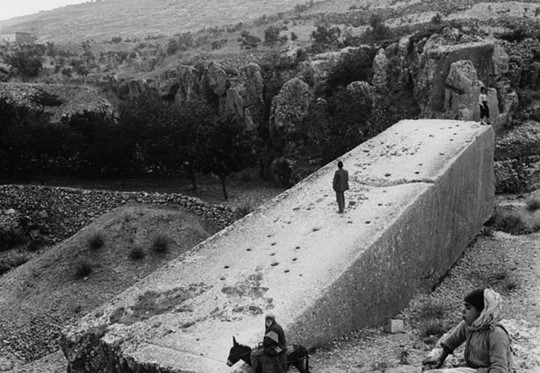The Certainty of Uncertain Forms, or in search of anexact typologies / The Stone Edition

ARC3018HF
Fall 2024 Thesis Seminar
Instructor: Carol Moukheiber
Meeting Section: L0108
Wednesdays 10:00 a.m. - 1:00 p.m.
“Questions… Morphology? Longevity? Incept dates?”
Roy Batty, Replicant – Blade Runner
What happens the day after a building is built? or years, decades, or even centuries after? Within the context of a circular economy, the concept of durability, as opposed to early/planned obsolescence, is key in that it implies an extended lifespan (100+ years) with minimum capital cost and energy expenditure during its duration. However, as the vagaries of history demonstrate with mutating contexts and social practices, building uses change over time. Durability can then perhaps be understood as the ability to eschew obsolescence, even facilitate change in use while limiting material waste and day to day disruption. This pursuit of durability, far from resulting in a nondescript structure posits that spatial, structural, material, and infrastructural specificities are critical in enabling the durable.
The seminar will engage in typological and material research, speculating into low carbon, functionally indeterminate forms, or anexact typologies that can anticipate change. Although uncertain in their programmatic destinies, these building morphologies will be quite certain in their spatial/formal/material inventions while remaining open ended, or uncertain in their social performance.
Stone (Greek: Lithos)
As a building material, stone is receiving renewed interest for its longevity, low carbon footprint, thermal properties, and potential for reuse. Widely used structurally until the advent of reinforced concrete, structural stone has a rich history across many cultures. The seminar will focus on stone in relation to the broad themes of time, adaptability, and durability.
Geologically, stone constitutes the lithosphere, the earth’s crust, which runs roughly 100 kilometers in depth. Stone is continuously being produced in the form of solidified magma and sedimentation, albeit occurring over millions of years. In that sense, like wood, stone can be considered a renewable resource -- one that depends on the ethical and environmental stewardship of the site of extraction. The seminar will engage in a series of guided and independent research phases. We will study relevant case studies that offer lessons from the past along with current experiments, and will unpack stone in relation to geography, geology, history, extraction, energy, economy, climate, materiality, construction, structure, culture, politics, technology, typology…. We will learn from stone’s interrupted history, and project its use as a structural material while allowing for adaptability over time.
While the seminar is interested in exploring the potential of stone and uncertain forms, it is also open in terms of individual interests and speculations couched within the broad themes of the seminar. Individual thesis questions will be formulated simultaneously during the term, and further developed in the following Thesis term. Emerging individual thesis projects are expected to expand on the studio’s research by understanding time (and lifecycles) as dominant design parameters in the selection of site(s), program(s), and form(s).
Term Structure
Week 1-2: P1 Defining Terms
The aim is to develop a collective understanding of what constitutes typological durability through a series of readings and group discussions.
Week 3-5: P2 Case Study Analysis
The aim is to develop and formulate strategies for adaptation and durability in buildings through an understanding of precedents.
Week 6-12: P3 Model Building + Site and Program Testing + Thesis Statement
The aim is to experiment with structural models and drawings that explore the concepts and knowledge gained from P1 and P2. Individual thesis questions are developed which include site and program investigations.

